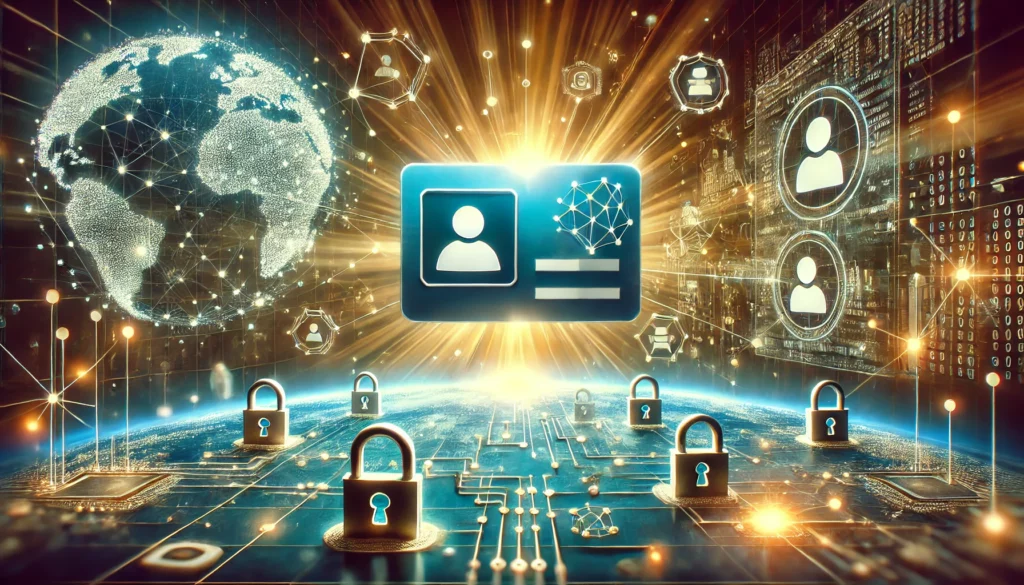The concept of identity has undergone a massive transformation in the digital age. Traditional, centralized systems for managing identity are increasingly being replaced by decentralized identity (DID) systems powered by blockchain and distributed ledger technologies. This paradigm shift is reshaping how individuals, businesses, and governments approach privacy, security, and autonomy in the digital world.
This article explores the fundamentals of DID systems, their benefits, challenges, global use cases, and their potential to redefine identity management.
What Are Decentralized Identity (DID) Systems?
Definition
Decentralized Identity (DID) systems are frameworks that allow individuals and entities to create, control, and manage their digital identities without relying on centralized authorities. Unlike traditional identity systems, where a single organization (such as a government or corporation) issues and stores identity credentials, DID systems leverage blockchain technology to enable self-sovereign identity (SSI).
Core Features
- Self-Sovereignty: Users have full control over their digital identities, deciding when, how, and with whom to share information.
- Decentralization: Identity data is stored on decentralized networks, eliminating single points of failure.
- Interoperability: DID systems are designed to work across platforms, enabling seamless verification across diverse ecosystems.
- Privacy by Design: Data minimization techniques ensure users share only the necessary information, protecting sensitive details.
How Do DID Systems Work?
- DID Creation Users create a unique digital identifier stored on a blockchain or distributed ledger. This identifier acts as a reference point for the user’s credentials.
- Credential Issuance Trusted entities, known as issuers (e.g., governments, universities, or employers), issue verifiable credentials linked to the user’s DID.
- Credential Storage Credentials are stored securely in digital wallets controlled by the user. These wallets can be mobile apps or cloud-based solutions.
- Verification When required, users present specific credentials to verifiers (e.g., a bank or online platform) through cryptographic proofs. The verifier can confirm the credentials’ authenticity without accessing sensitive data.
Key Technologies Behind DID Systems
- Blockchain and Distributed Ledgers These technologies provide a tamper-proof and decentralized infrastructure for storing DIDs and credential references.
- Public-Private Key Cryptography Cryptographic keys secure user identities and facilitate verifiable credentials.
- Zero-Knowledge Proofs Advanced cryptographic techniques allow users to prove the validity of credentials without revealing the underlying data (e.g., proving age without sharing a birthdate).
- Digital Wallets Secure storage solutions enable users to manage and present credentials easily.
Benefits of Decentralized Identity Systems
1. Enhanced Privacy and Security
DID systems empower users to share only what’s necessary, reducing exposure to data breaches and identity theft.
2. Reduced Reliance on Centralized Authorities
By removing intermediaries, DID systems eliminate single points of failure and the risk of misuse or loss of data.
3. Improved User Experience
Users can manage multiple credentials in a single wallet, streamlining processes like logging into websites, applying for jobs, or accessing government services.
4. Global Interoperability
DID standards, such as those developed by the World Wide Web Consortium (W3C), ensure that identities can be used across platforms and borders.
5. Empowerment for the Underserved
DID systems offer identity solutions for the 1 billion people worldwide who lack formal identification, enabling them to access banking, education, and healthcare.
Applications of DID Systems
1. Financial Services
Banks and financial institutions can use DIDs to streamline Know Your Customer (KYC) processes, reducing costs and improving customer onboarding.
2. Healthcare
Patients can use DIDs to manage medical records, granting access to doctors and insurers on a need-to-know basis.
3. Government Services
Governments can issue digital IDs for voting, tax filings, and social services while ensuring user privacy and data sovereignty.
4. Education
Universities and training institutions can issue digital diplomas and certificates, enabling global verification of academic achievements.
5. E-Commerce
DID systems enable seamless authentication for online platforms, reducing reliance on passwords and improving security.
Global Adoption of DID Systems
1. Estonia
As a pioneer in digital identity, Estonia has integrated blockchain technology into its e-residency program, providing users with secure access to government and business services.
2. India
India’s Aadhaar system is exploring blockchain-based enhancements to improve data security and user control.
3. European Union
The EU’s eIDAS framework is incorporating DIDs to standardize digital identities across member states.
4. Microsoft ION
Microsoft’s ION, built on the Bitcoin blockchain, is a scalable, open-source DID system enabling self-sovereign identity solutions.
Challenges and Concerns
1. Technical Complexity
The adoption of DID systems requires robust infrastructure, which can be challenging for developing regions.
2. Lack of Standardization
While standards like W3C’s DID specification exist, global consensus on implementation is still evolving.
3. User Adoption
The transition from centralized to decentralized systems may face resistance due to unfamiliarity or lack of trust.
4. Regulatory Concerns
Governments may resist DIDs due to fears of losing control over identity verification and monitoring.
5. Interoperability Issues
Ensuring that different DID systems can work together seamlessly is a significant hurdle.
The Future of DID Systems
Decentralized identity systems are poised to revolutionize how we think about and manage identity. As technology evolves, several trends are emerging:
- Mass Adoption: Collaboration between governments, corporations, and blockchain innovators is driving mainstream adoption.
- Integration with IoT: DIDs will enable secure identity management for IoT devices, enhancing cybersecurity in connected ecosystems.
- AI-Driven Identity Management: Artificial intelligence could enhance DID systems by automating and optimizing identity verification processes.
Conclusion on Decentralized Identity (DID) Systems
Decentralized identity systems represent a significant step forward in achieving a secure, private, and user-centric approach to digital identity. By empowering individuals to control their own data and minimizing reliance on centralized authorities, DIDs offer solutions to some of the most pressing issues in the digital era.
As the world increasingly moves online, DID systems will play a crucial role in shaping the future of identity management, making our digital interactions more secure, inclusive, and efficient. While challenges remain, the potential benefits of decentralized identity far outweigh the obstacles, heralding a new era of trust and autonomy in the digital age.


